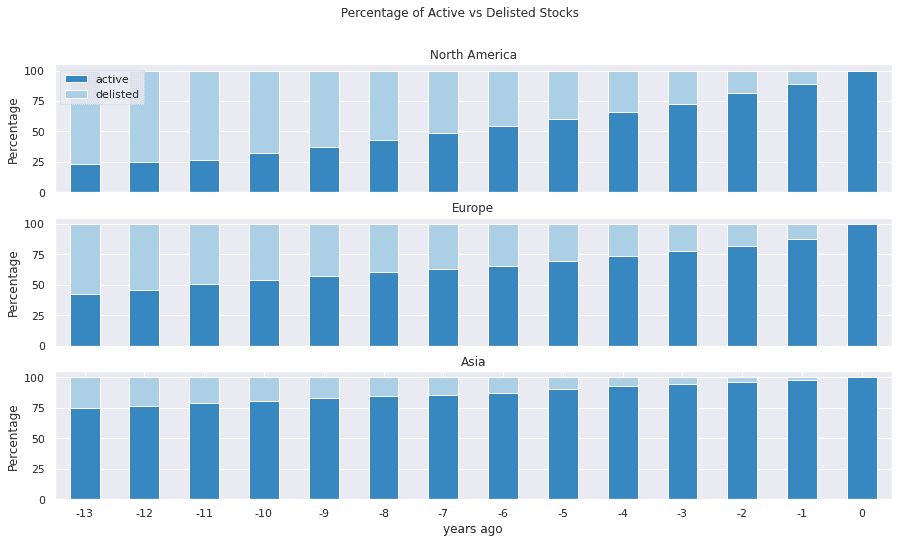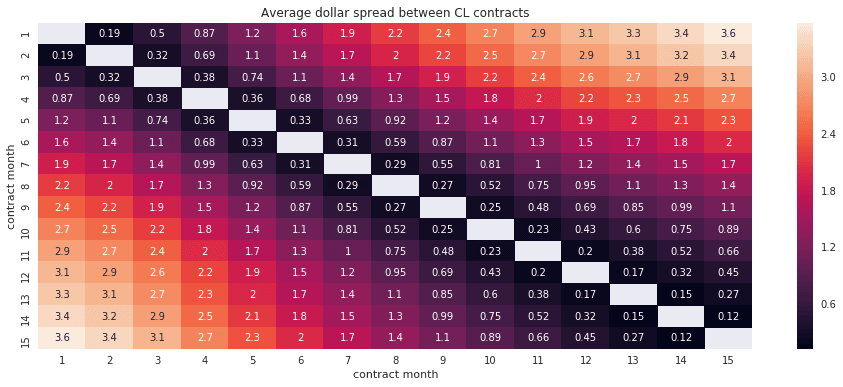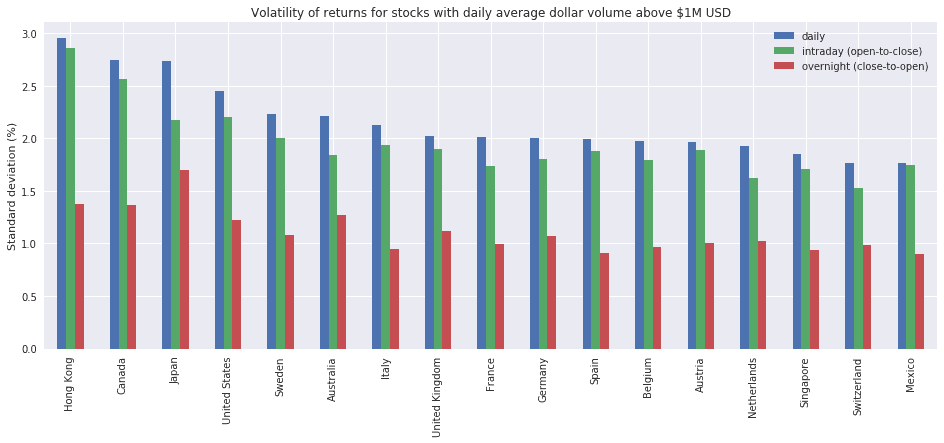
What is survivorship bias, and why should you care about it? This post explains how survivorship bias can trick you into drawing faulty conclusions from your research, and what you need to know to avoid being tricked.

What is survivorship bias, and why should you care about it? This post explains how survivorship bias can trick you into drawing faulty conclusions from your research, and what you need to know to avoid being tricked.

Quantopian announced that it is shutting down its community platform. This doesn’t entirely come as a surprise.

What happens when strong stocks gap down at the open? A well-known trading strategy is to buy the gap, expecting mean reversion. This post uses Zipline to explore down gaps and finds a profitable strategy based on selling, not buying, the gap.
QuantRocket 2.0 is now available, with minute data for US stocks, Zipline live trading, new broker support, new data providers, and more.

Intraday trading strategies offer great promise as well as great peril. This post explores an intraday trading strategy for crude oil calendar spreads and highlights the impact of transaction costs on its profitability.

Classic pairs trading strategies have suffered deteriorating returns over time. Can a research pipeline that facilitates the identification and selection of ETF pairs make pairs trading viable again? This post investigates such a pipeline.

Do intraday strategies have a place in the portfolios of long-term investors and fund managers? This post explores an intraday strategy that works best in high volatility regimes and thus makes an attractive candidate for hedging long-term portfolio risk.

Does forced buying and selling of underlying shares by leveraged ETF sponsors cause predictable intraday price moves? This post explores an intraday momentum strategy based on the premise that it does.

Do businesses exchange currencies in predictable ways that FX traders can exploit? This post explores an intraday EUR.USD strategy based on the hypothesis that businesses cause currencies to depreciate during local business hours and appreciate during foreign business hours.

Many quantitative trading strategies thrive in high volatility regimes, while other trading strategies work best in low volatility regimes. So which global markets are the most and least volatile? This post compares the daily, overnight, and intraday volatility of 17 countries.